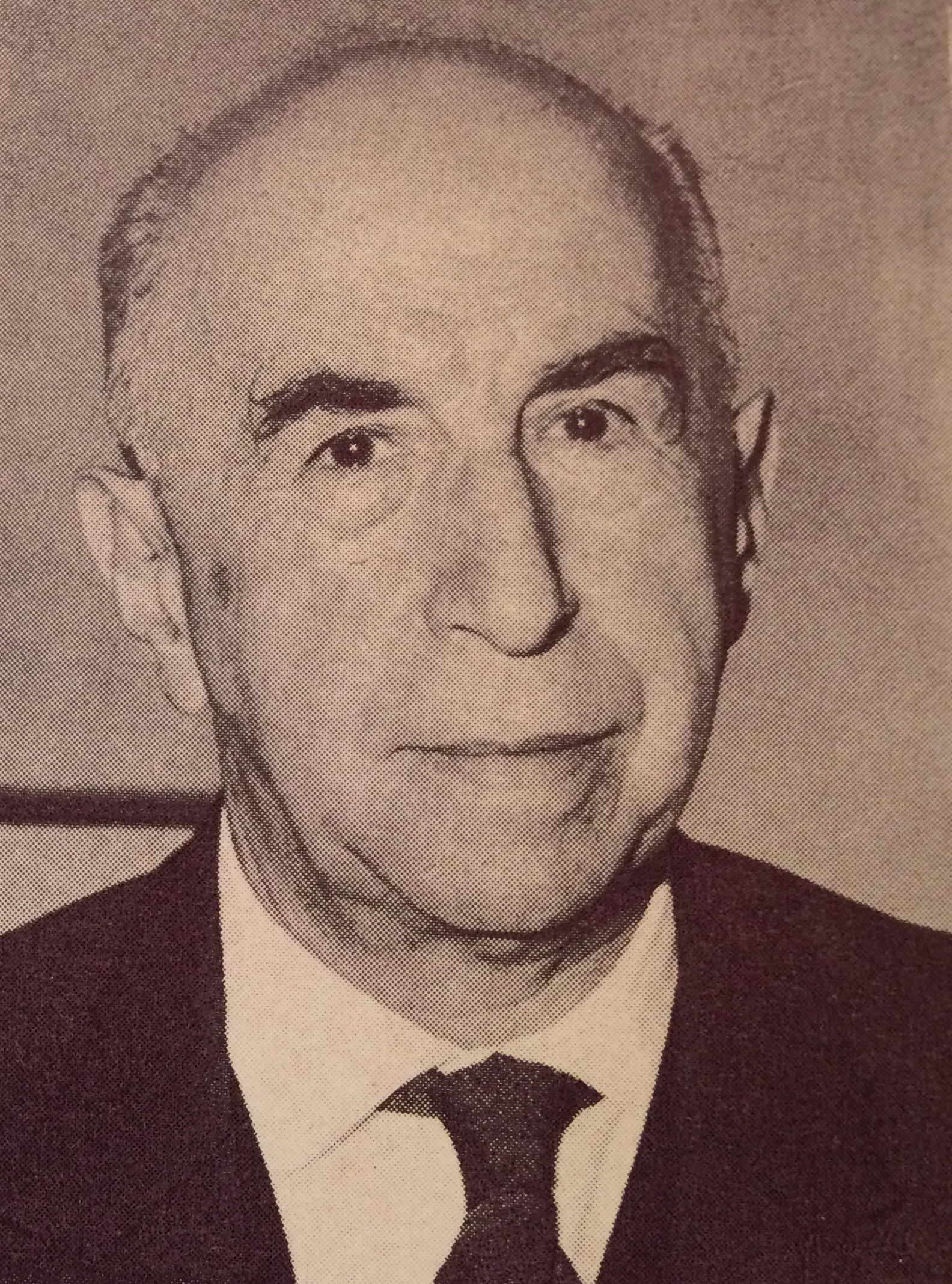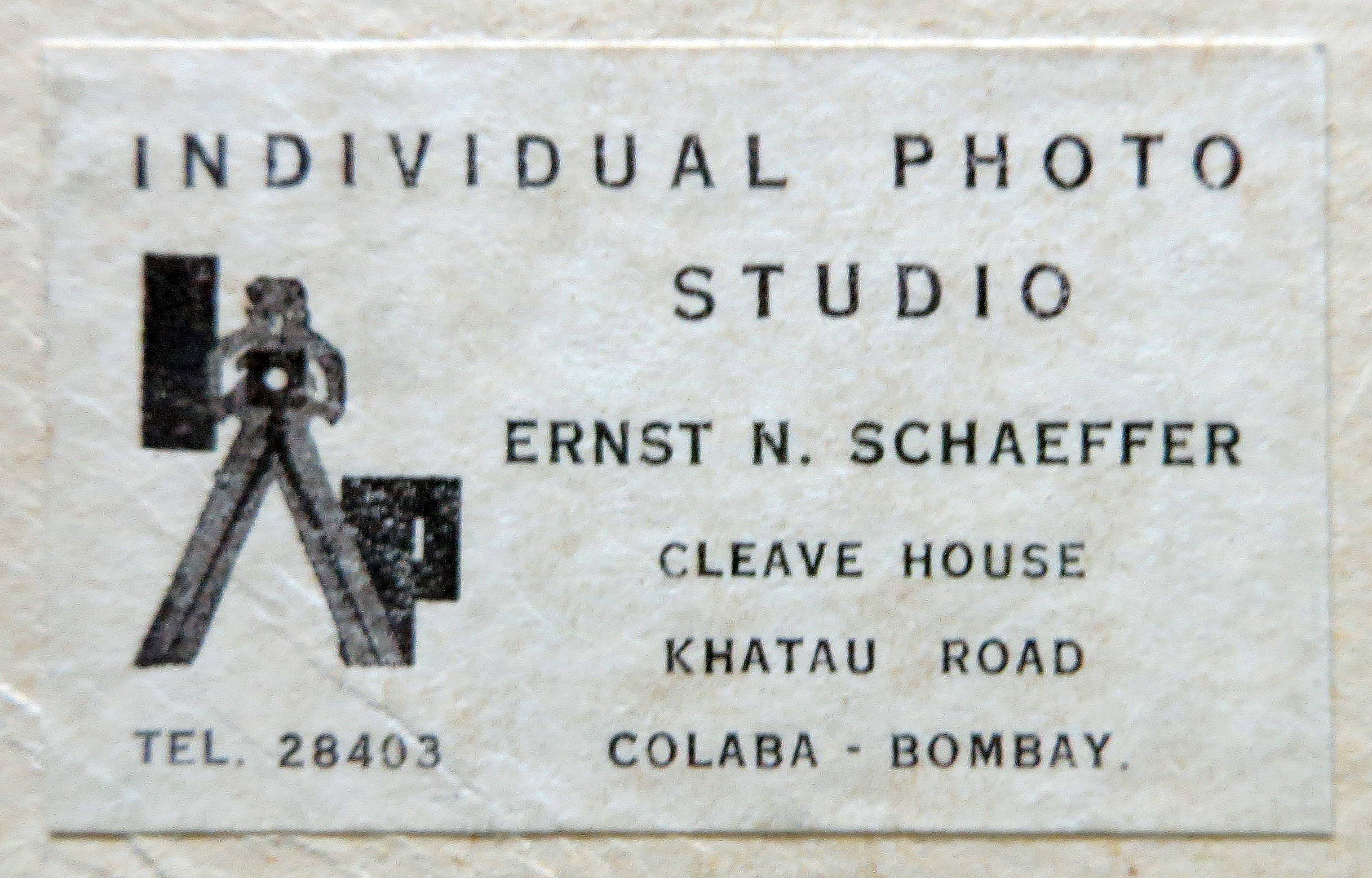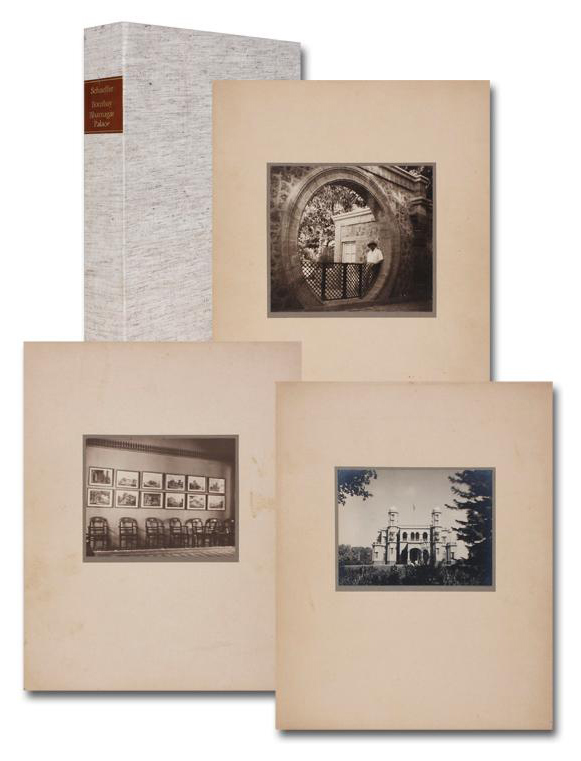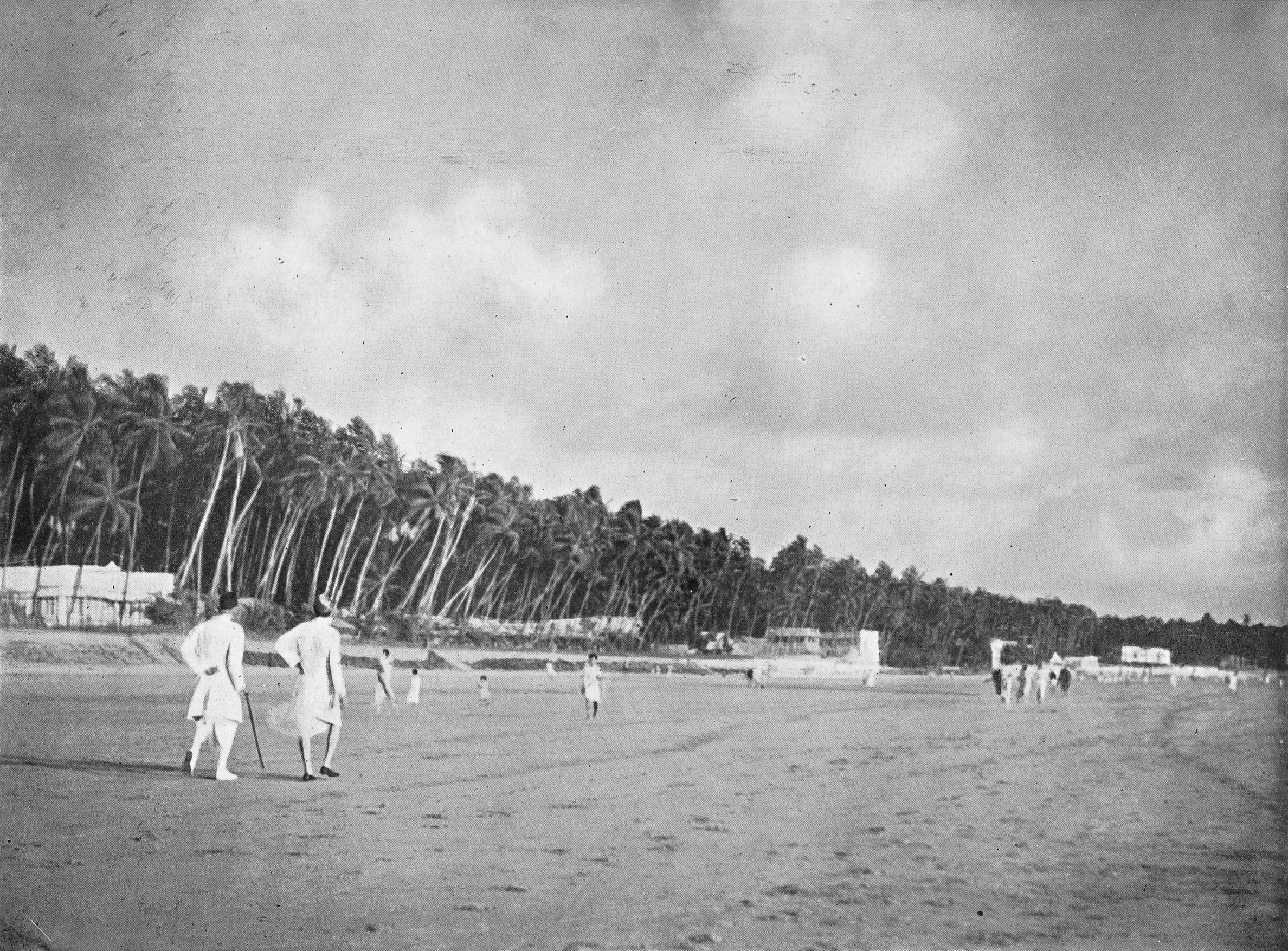Archive
Ernst N. Schaeffer
- Ernst
- N.
- Schaeffer
Ernst Schaeffer, E.N. Schaeffer, Ernst Schäffer, later Ernest Norbert Schaeffer and Ernest N. (Norbert/Nathan) Shaffer
- 1892
- Breslau ()
- 1978
- Bonn (DE)
- JournalistPhotojournalistTour GuideEditorRadio ModeratorNewspaper Correspondent
In exile Ernst Schaeffer diversified his journalistic practice and developed an understanding of Bombay through walking the city streets, taking on street-level-photography and photojournalism.
Word Count: 24

Portrait of Ernest N. Shaffer, around 1965. (© Shaffer 1971; Photo: Margit Franz 2021). 
Photo Studio Ernst Schaeffer's logo and address (© Antiquariat Gerhard Gruber (Heilbronn); All rights reserved). 
Portrait of Maharaja Raol Sir Shri Krishna Kumarsinhji Bhavsinhji KCSI (1912–1965), the last ruling Maharaja of Bhavnagar State by Ernst Schaeffer, around 1935 (© Antiquariat Gerhard Gruber (Heilbronn); All rights reserved). 
Ernst Schaeffer’s photographic documentation of the renovation and expansion of Nilambagh Palace in Bhavnagar, mid 1930s (© Antiquariat Gerhard Gruber (Heilbronn); All rights reserved). 
Ernst Schaeffer, Juhu (Pictorial Bombay, p. 54; Photo: Margit Franz 2021). 
Cover of Ernest N. Shaffer’s autobiography Ein Emigrant entdeckt Indien (Photo: Margit Franz 2021). Anonymous. “Schäffer, Ernst (1892–1978) .” Kalliope-Verbund, kalliope-verbund.info/gnd/117099600. Accessed 30 June 2021.
Franz, Margit. Gateway India: Deutschsprachiges Exil in Indien zwischen britischer Kolonialherrschaft, Maharadschas und Gandhi. CLIO, 2015.
Franz, Margit and Rachel Lee, “An Exile’s Guide: Ernst Schaeffer’s Pictorial Bombay and the Construction of Bombay’s Touristscape.” Urban Exile: Theories, Methods, Research Practices, edited by Burcu Dogramaci et al., Intellect Ltd., forthcoming 2022.
Ganor, Sheer and Rebekka Grossmann, “Displacement in Stills: German-Jewish Photographers on the Move.” Migrant Knowledge, May 14, 2021, migrantknowledge.org/2021/05/14/displacement-in-stills/. Accessed 24 July 2021.
Krishnamoorthy, Kaushalya. India and the Exile Experience as Mirrored in the Writings of Jewish Exiles and Indian Writers. Doctoral thesis, Wayne State University, 2003. ResearchGate, www.researchgate.net/publication/34976696_India_and_the_Exile_Experience_as_Mirrored_in_the_Writings_of_Jewish_Exiles_and_Indian_Writers. Accessed 20 March 2021.
Reiter, Andrea. “Diaspora und Hybridität: Der Exilant als Mittler.” Diaspora – Exil als Krisenerfahrung. Jüdische Bilanzen und Perspektiven (Zwischenwelt Jahrbuch, 10), edited by Armin Eidherr et al., Drava Verlag, 2006, pp. 36–51.
Roth, Helene “‘First Pictures’: New York through the Lens of Emigrated European Photographers in the 1930s and 1940s.” Contact Zones: Photography, Migration and Cultural Encounters in the United States, edited by Justin Carville and Sigrid Lien, Leuven University Press, 2021, pp. 111–132.
Schaeffer, E.N. Pictorial Bombay. New Book Co., [1936].
Schaeffer, Ernst Nathan. “Feast in Bhopal. A Marriage Unites Two of India’s Leading Muslims.” Life, 19 June 1939, pp. 44–48.
Schaeffer, Ernest N. “Emigrantenleben in Indien.” Aufbau, vol. 7, no. 18, 2 March 1941, p. 7.
Shaffer, Ernest N. Ein Emigrant entdeckt Indien. Verlag Information und Wissen, 1971.
Voigt, Johannes H. “Die Emigration von Juden aus Mitteleuropa nach Indien während der Verfolgung durch das NS-Regime.” Wechselwirkungen, Jahrbuch aus Lehre und Forschung der Universität Stuttgart, 1991, pp. 83–95.
Word Count: 275
Private Archive Margit Franz, Sinabelkirchen
The Times of India [Mumbai] Archive on ProQuest, via Staatsbibliothek zu Berlin:
https://staatsbibliothek-berlin.de/recherche/elektronische-ressourcen. Accessed 30 June 2021.Word Count: 23
Our thanks to Antiquariat Gerd Gruber.
Word Count: 6
Cleave House, Katau Road, Colaba, Bombay (Cleave House
90, Wode House Road, Colaba Causeway, Colaba Mumbai, Maharashtra 400005, India)- Bombay
- Margit Franz; Rachel Lee. "Ernst N. Schaeffer." METROMOD Archive, 2021, https://archive.metromod.net/viewer.p/69/2951/object/5138-12057988, last modified: 23-09-2021.
-
Pictorial BombayGuidebookBombay
The guidebook Pictorial Bombay is a light-hearted portrayal of Bombay and its inhabitants as seen by an outsider, the German emigrant Ernst Schaeffer, through photos and texts in 1936.
Word Count: 28
New Book Co.Publishing HouseBook ShopBombayThis bookstore was a hub for Bombay's creatives and intellectuals.
Word Count: 10
Mulk Raj AnandWriterPhilosopherArt PatronCultural CriticBombayAs a global socialist and modernist, Mulk Raj Anand sought and shaped opportunities for intellectual exchanges between Asia and Europe.
Word Count: 20
Walter KaufmannComposerConductorMusicologistTeacherBombayThe 12-year exile in Bombay shaped Walter Kaufmann’s life and work; his signature tune for All India Radio is played till today.
Word Count: 23
Black Star AgencyPhoto AgencyNew YorkThe German émigrés Kurt S(z)afranski, Ern(e)st Mayer and Kurt Kornfeld founded Black Star in 1936. The photo agency established was a well-run networking institution in New York.
Word Count: 31
Jewish Relief Association BombayRelief OrganisationBombayIn 1934, the first refugees from National Socialism founded a Jewish aid association in Bombay called the Jewish Relief Association (JRA) to help refugees in financial and other difficulties.
Word Count: 28
The Leydens: Sculpture, Paintings, CartoonsExhibitionBombayIn 1948 Albrecht and Rudi von Leyden sold their personal works of art in order to set up an “Artists' Aid Fund”, which became an institution in the following years.
Word Count: 29